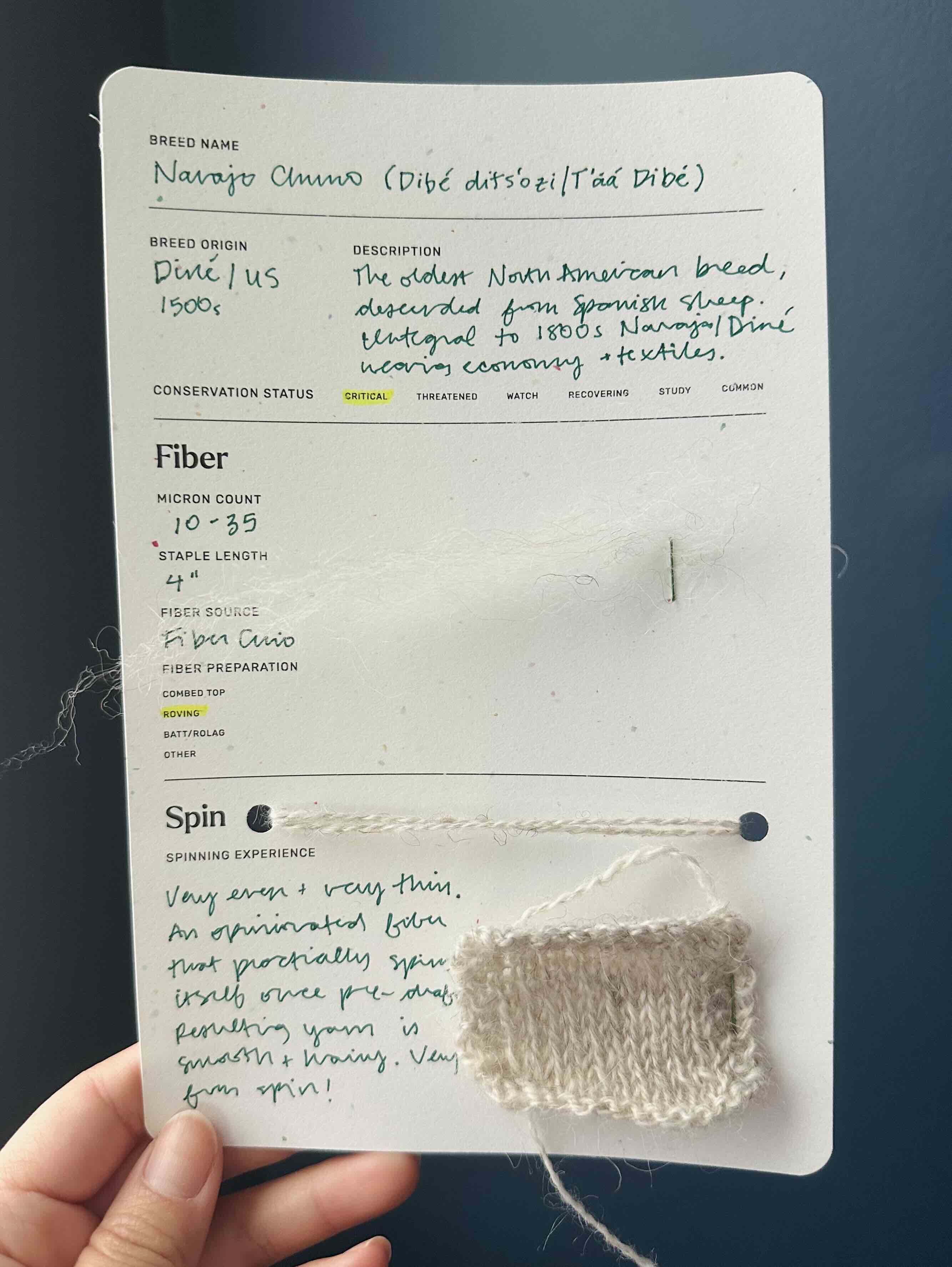Navajo Churro / Dibé ditsozi
Breed Study ♪ spinning
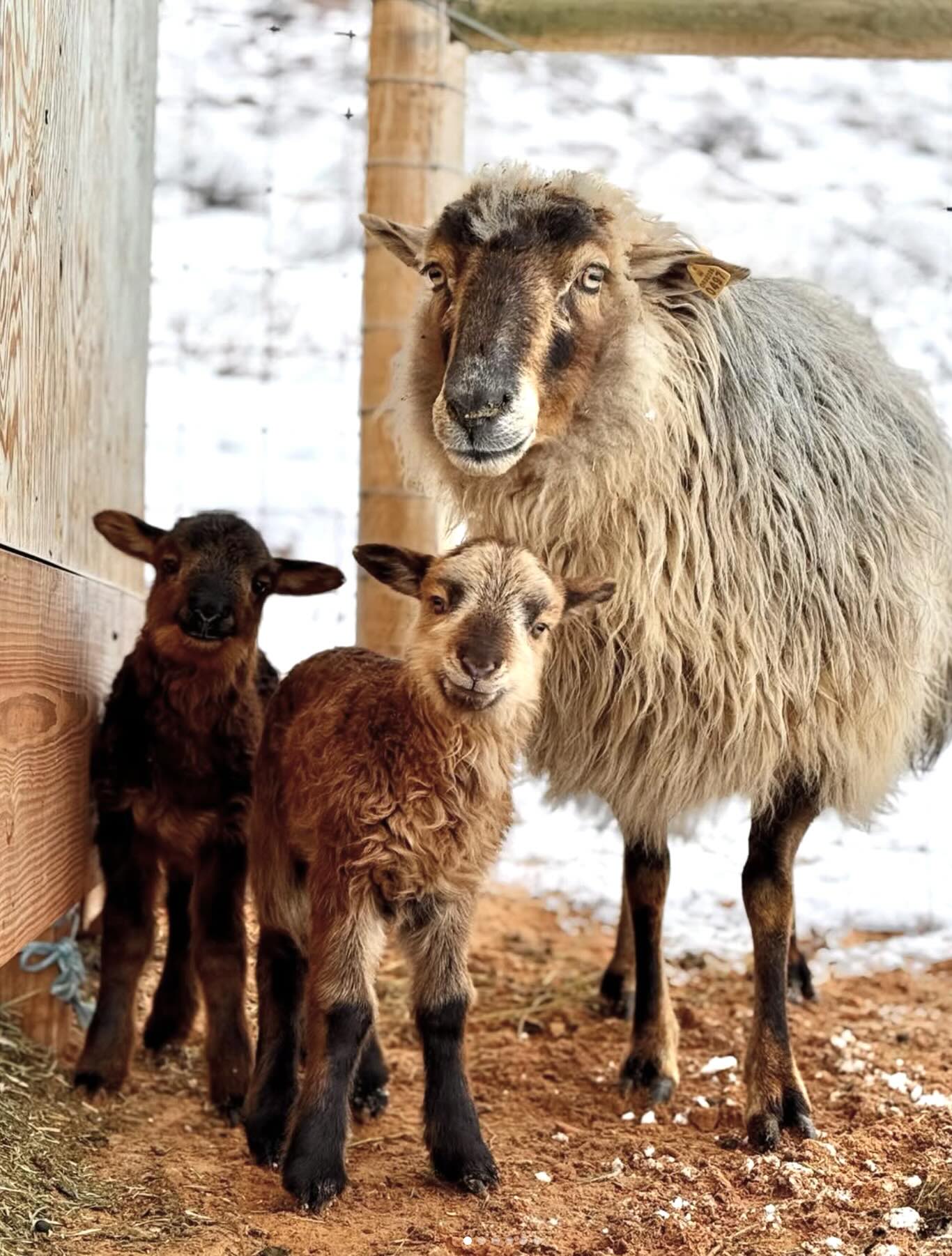
Photo by Nikyle Begay.
The history
The Navajo Churro is America’s oldest breed, and boy howdy—on the Kent Romney study, I made some comment on sheep breeds coming hand in hand with the history of a place’s economy, and that’s reeeeal true in this case.
The Navajo Churro is descended from sheep brought over by Spanish conquistadors in the 1500s, an Iberian breed called the Churra. The Diné people began to trade and raid these sheep and cultivate their own herds, improving the stock so it could thrive here. The herds were integral to the Diné economy, and handicrafts like weaving flourished.
The Navajo Churro accompanied the Diné who were forced from their homes into internment camps in the 1800s. They were culled by the goverment to reduce drought effects the Diné people did not cause. It is a bloody past that echoes the horrors done to their people.
All the while, the breed was being ‘improved’ by crossing with Merino to meet more Eurocentric tastes. Some herds remained in isolated areas and on the reservation. Navajo Churro are critically endangered, in no small part due to the efforts to destroy Indigenous culture as a whole, as well as Indigenous livelihood. “Old type” sheep are being carefully managed and bred. Read much more about the Navajo Churro at the Navajo-Churro Sheep Association (N-CSA).
Here is a modern example of Diné style weaving from a shepherd and textile artist, Nikyle Begay. Please do check out this Instagram page to see more pics of sheep, and gorgeous modern and historical weavings.
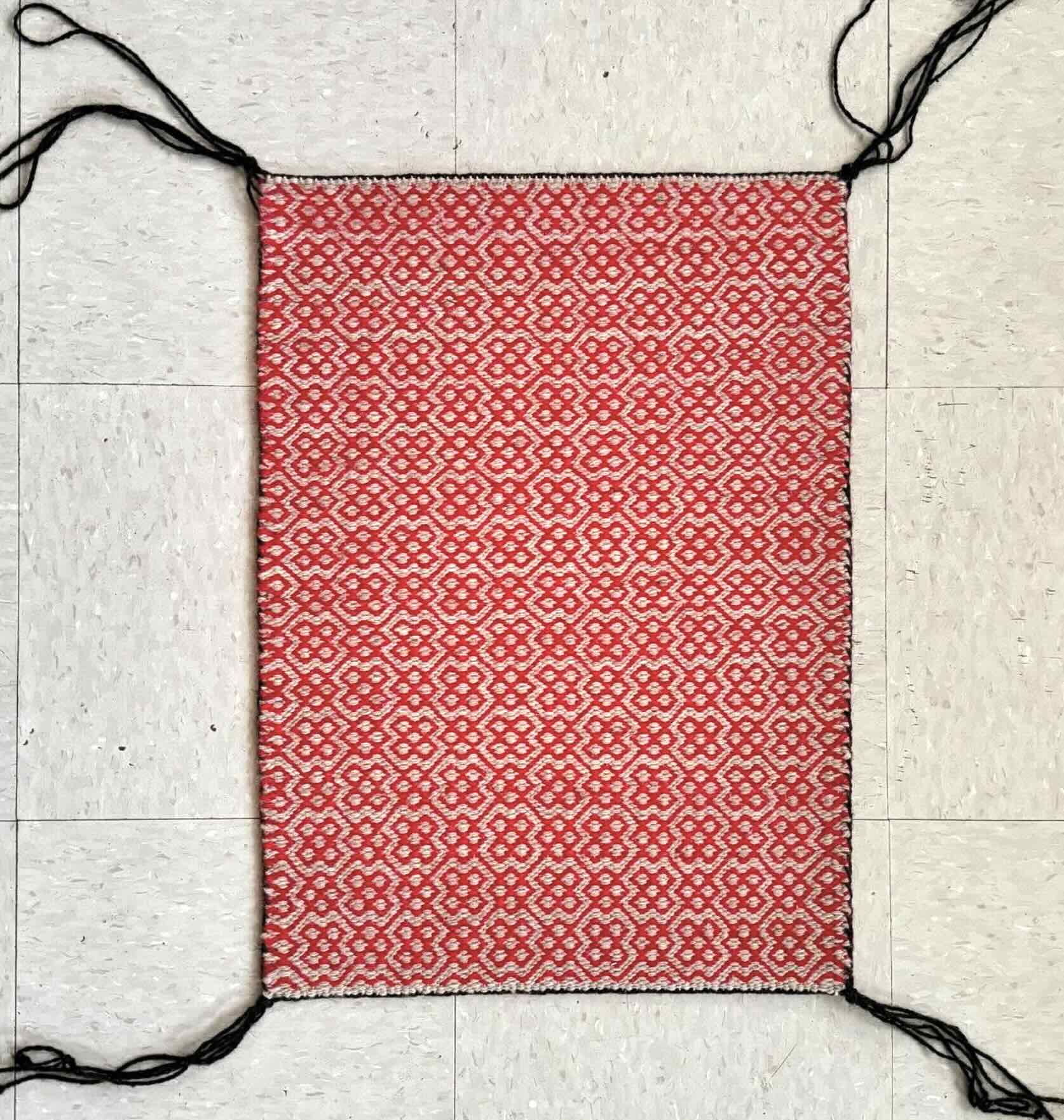
The wool
Spinners often say they listen to the fiber and spin it how it wants to be spun. I finally understand what this means. I’ve mostly spun commercially combed top until now. This experience makes me wonder if this creates a little remove from the actual nature of the fibers. Immediately upon drafting this roving, the fiber seemed to suck itself up into the spinning wheel orifice. It wanted to be extremely thin, thinner than I’ve ever spun.
I let it do its thing? And honestly I feel like I was rewarded. This was a truly harmonious spin. Partially this is because I finally adjusted my wheel to spin at a lower ratio, and oiled everything to the dickens. But really—this fiber told me what to do.
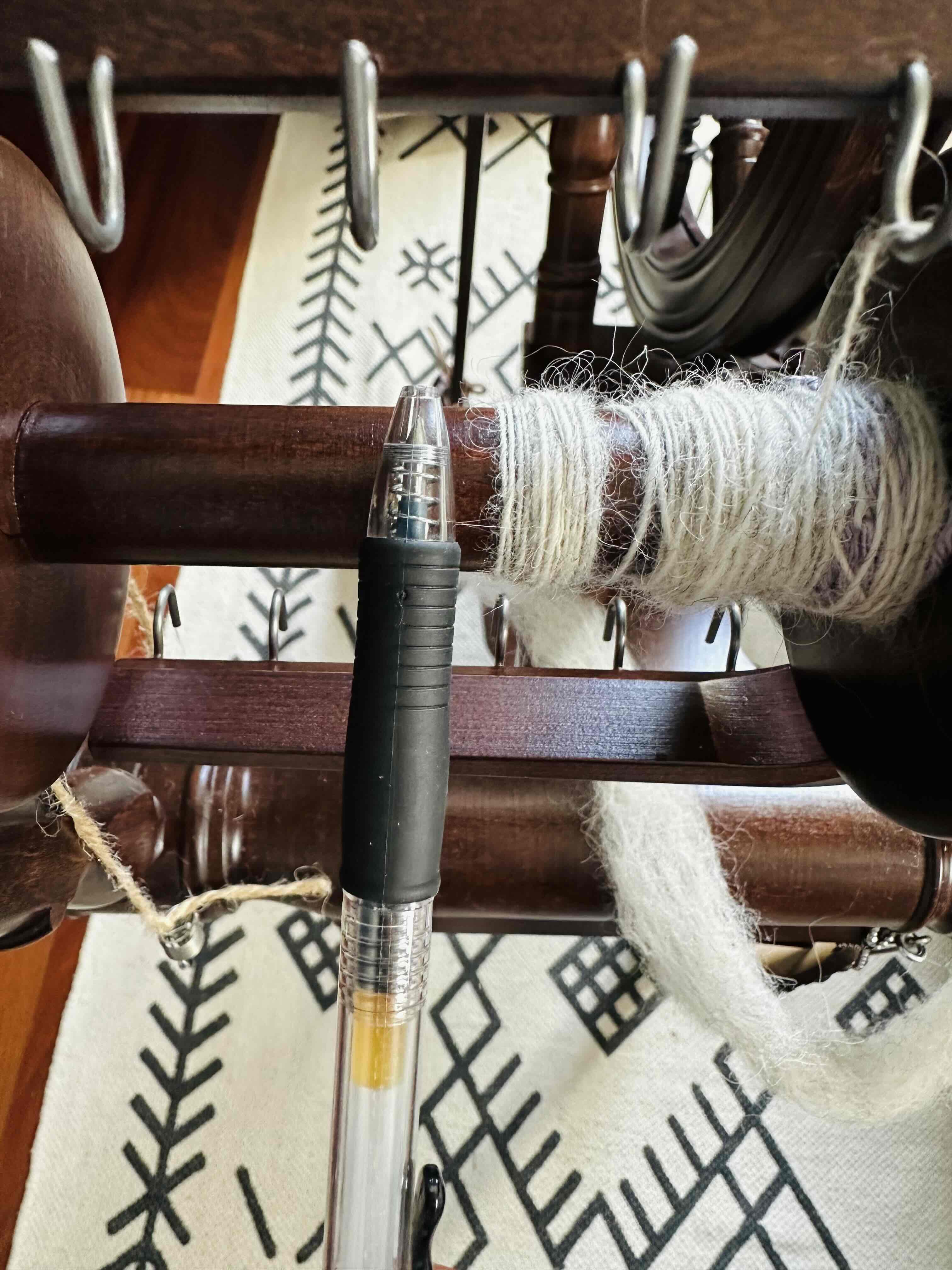
I was very nervous to spin roving, but this has really encouraged me that I can handle it. While I had to pre-draft the fiber a little more rigorously (basically, pull it apart a bit so the fiber slides nicely while spinning), I loved spinning this so much, and would definitely do it again. It’s certainly a hairy yarn. I think this particular batch will make a nice vest or overcoat.
In the future, after learning more of the history, I will certainly try to source my next roving directly from a Diné seller who has “old style” sheep. This roving was a pleasure to sample and spin, regardless.
Before
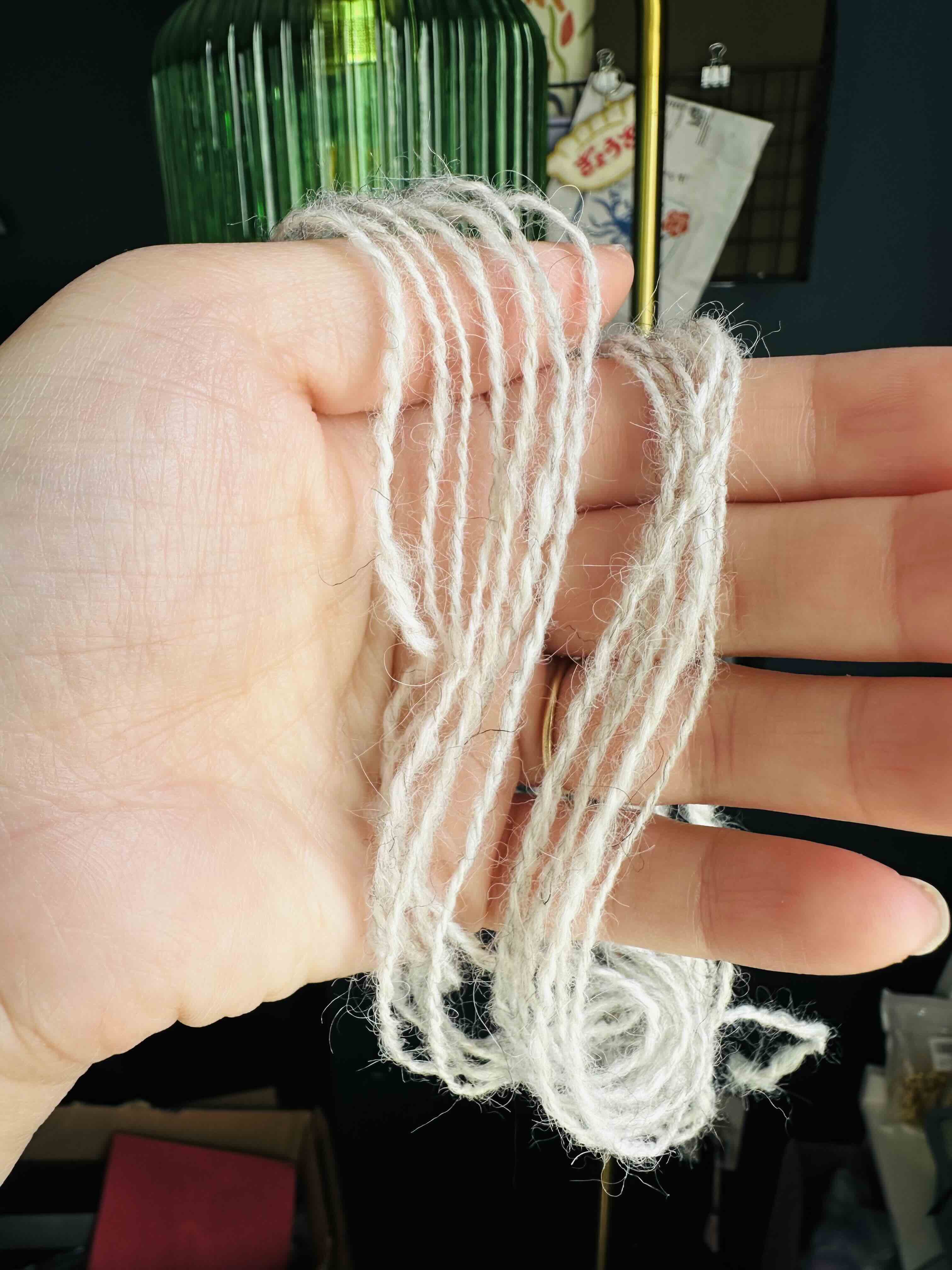
After
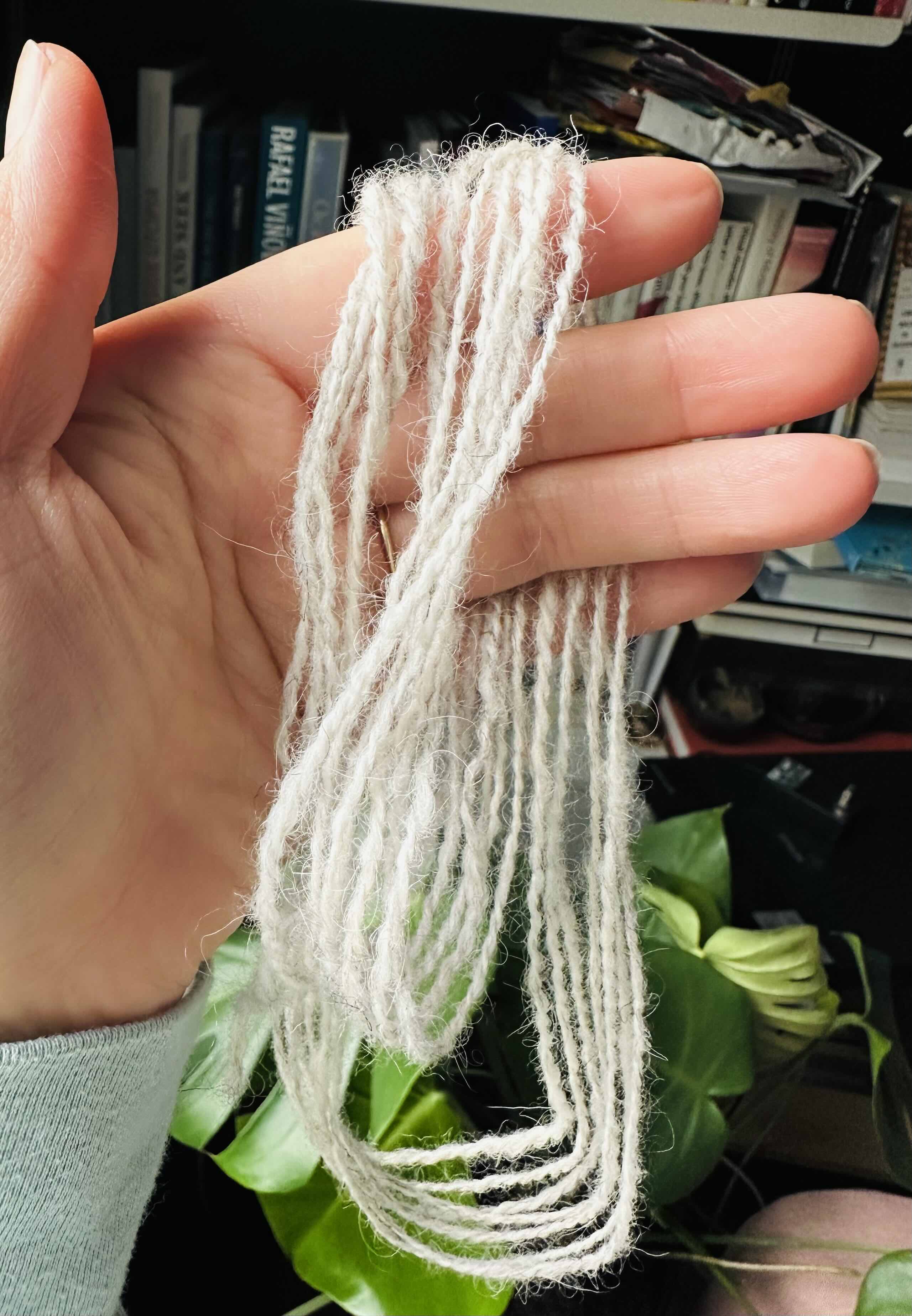
Washing the sample yarn.
This sample was absolutely my most even spin. The yarn came out incredibly consistent, and the knit sample was so uniform it almost looks commercial?? Rivals the best Icelandic skein imho.
